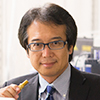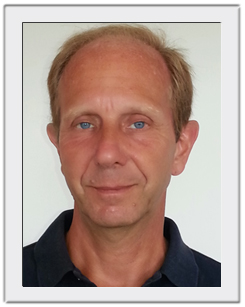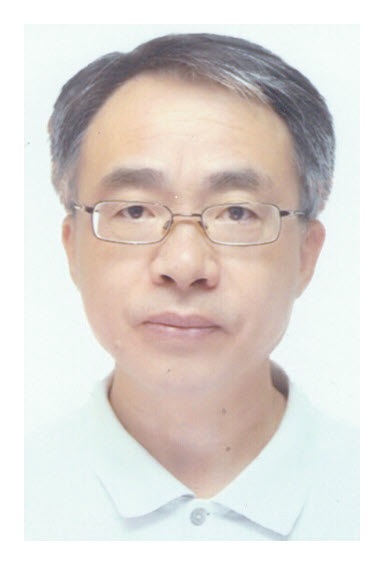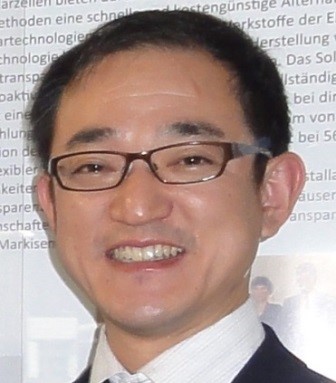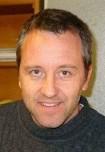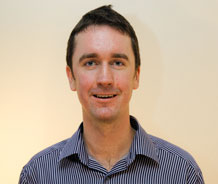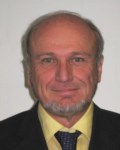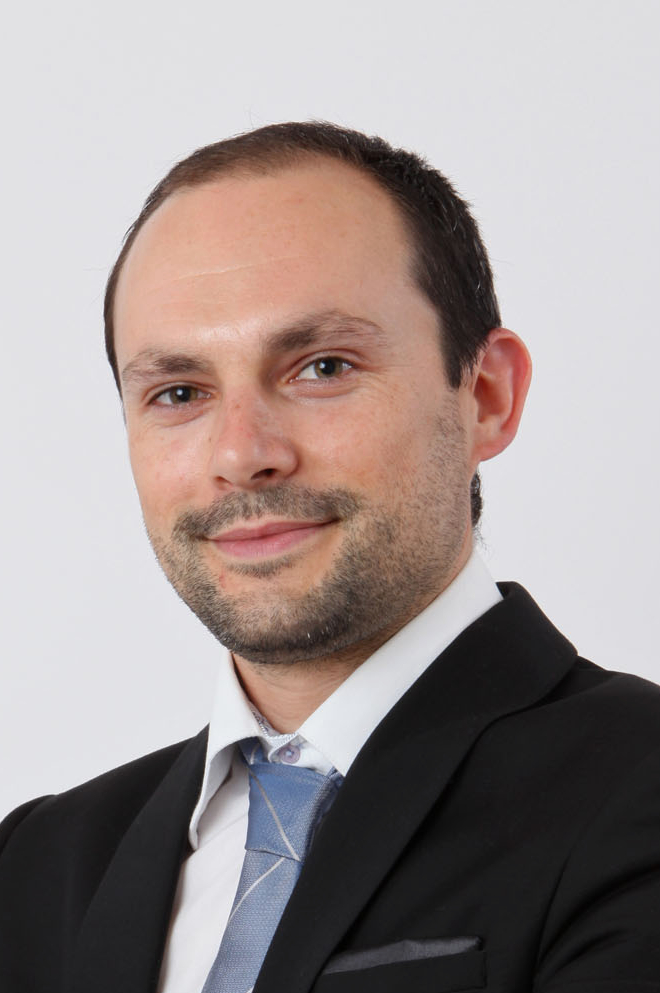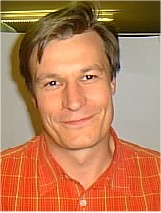Speakers 2017
Takunori Taira was born in Fukui, Japan, in 1960. He received the B.E. and M.E. degrees from Fukui University, Fukui, Japan, in 1983 and 1985, respectively, and the Ph.D. degree in communication engineering from Tohoku University, Sendai, Japan, in 1996. In 1985, he joined Mitsubishi Electric Co., Japan. From 1989 to 1998, he was a Research Associate at Fukui University, a Visiting Researcher at Stanford University, during 1993 to 1994. He is currently an Associate Professor with the National Institutes of Natural Sciences, Institute for Molecular Science (IMS), Okazaki, Japan, and an Invited Professor at Pierre and Marie Curie University (Paris VI), Paris, in 2006, and Universite Joseph Fourier, in 2011, Ecole Nationale Supérieure de Chimie de Paris (ENSCP) – Chimie ParisTech, Paris, France in 2013, Toyohashi University of Technology, Aichi, Japan in 2016.
Prof. Taira was the General Chair of Advanced Solid-State Photonics (ASSP) 2009 and Nonlinear Optics (NLO) 2011, and the board of Senior Associate Editors of the Journal of Optical Materials Express (OMEx), Optical Society of America (OSA), Washington D.C., USA. Member of the Board of Meetings, Councils, OSA from 2014. He received the “2004 Commendation” Award of the Ministry of Education, Culture, Sports, Science, and Technology of Japan, for scientific and technological research merits (Japan) in 2004, “OSA Fellow” in 2010 (USA), “SPIE Fellow” in 2012 (USA), and “IEEE Fellow” in 2014 (USA).
Marco Romagnoli is author of more than 170 journal papers and conference contributions, he is also inventor in more than 45 patents. He is in the technical committee of the major conferences in photonics (CLEO/QELS, CLEO Europe, ECOC, MNE, Group IV Photonics), he served as expert evaluator for EC in the 6th Framework Programme and since 2001 till 2006 coordinated a framework programme between Pirelli and MIT in which he pioneered the development of Silicon Photonics. Marco Romagnoli was awarded of the ‘Phillips Morris’ prize for the optical innovation in 1994 and in Pirelli he also got the title of Chief Scientist.
Angela Seddon holds the Chair in Inorganic Materials at Nottingham University, UK. From October 2007, she will additionally hold the award of Royal Academy of Engineering / Leverhulme Trust Senior Research Fellowship. She heads up the Novel Photonic Glasses Group and the over-arching Advanced Materials Research Group at Nottingham. Experimental facilities,housed in the Wolfson Centre for Materials Research, are world-class. The aim of her research is to bring understanding to how the nano- and micro-structureof special glasses influence glass optical properties and ultimate optical device performance and she has published over 140 research papers. The laboratory facilities at Nottingham University for synthesising and fabricating these glasses include a class 10,000 cleanroom Fab. Lab., housing a customisedHeathway tower for drawing novel optical fibres and novel processing facilitiesfor making planar, small-scale waveguides. See more…
Zhang received his BA in materials science and engineering from Zhejiang University (China) in 1983, and his MA and PhD in solid state chemistry from University of Rennes 1 (France) respectively in 1985 and 1988. He joined the CNRS (French National Centre for scientific research) in 1989. In 1996, he founded the company VERTEX S.A. specialized in infrared optics thanks to the technology transfer from the joint CNRS/University of Rennes’s laboratory of glasses and ceramics. In 2001 this company became part of the UMICORE group, world leading supplier of infrared materials. In 2002, Zhang returned to the CNRS as research director. Zhang has been specialized in infrared transmitting glasses and glass ceramics, and he is author or co-author of more than 270 scientific papers in peer reviewed journals and 16 patents. He is currently the head of the laboratory of glasses and ceramics (37 permanent staffs+ about 25 PhD students/post-doc) in university of Rennes I (France)
Professor – Ceramics Division, Department of Materials Science and Engineering, Nagoya Institute of Technology, Japan). Optical Properties of Ceramics (Glasses, Nanocrystals, Translucent Alumina) See More…
Lionel Canioni commence ses études à Marseille, avant de faire sa maîtrise à Bordeaux, et un DEA de physique, au CPMOH (voir article sur André Ducasse). Il cherche alors une thèse, et trouve le programme pour travailler avec des lasers femtoseconde, en 1991/92. Il rencontre alors André Ducasse et Laurent Sarger, qui lui proposent une thèse. L’un des aspects qui le séduit est que « le laser tient sur une table, on peut le manipuler directement ». C’est le second laser industriel de ce type d’Europe. Ses expériences portent sur la spectroscopie résolue dans le temps, il s’agit sonder des processus physiques très courts (avec un pas d’une centaine de femtosecondes). Il passe sa thèse en 1994, et après son service militaire, il trouve un poste sur cet axe de recherche au CPMOH. Au départ, il s’intéresse à la spectroscopie du solide, c’est-à-dire l’analyse de la réponse du solide soumis à un faisceau femtoseconde, puis à la spectroscopie dans les liquides, jusqu’à la spectroscopie résonnante, en partenariat avec le laboratoire d’optique appliquée de Palaiseau. Dans le cadre du programme Initiative d’Excellence de l’Université de Bordeaux, en parallèle de l’arrivée de l’IOGS (Institut d’Optique Graduate School) à Bordeaux et du LP2N (Laboratoire Photonique Numérique et Nanosciences) se construit le Cluster d’Excellence LAPHIA (Laser and Photonics in Aquitaine). See more…
Hervé Maillotte is a CNRS research director at FEMTO-ST Institute, Besançon, France. After completing his PhD at University of Franche-Comté in 1990, he has been recruited as a CNRS researcher in 1991 and has developed several themes in nonlinear (self-)guided photonics, such as Kerr and photorefractive spatial soliton dynamics, non-linear Z-scan metrology applied to organic materials, parametric amplification in optical fibers, fiber supercontinuum generation. More recently, he has led researches on opto-acoustics in photonic crystal fibers and microwires, with applications to distributed sensing, and on technological research on lithium niobate thin film processing. Author or co-author of more than 240 peer-reviewed papers and international communications, two patents, he has directed or co-directed 19 PhD theses and has been coordinating about 20 academic and industrial contracts and national and international cooperation programs.
Head of the Nonlinear Optics group from 1997 to 2005, he led the Optics Department of FEMTO-ST (90 people) and was a Board member of the Institute (> 750 people) from 2006 to 2016.
Hervé Maillotte has actively contributed to the Labex ACTION project, a 2012 ANR labeled laboratory of excellence on smart systems embedded into matter that brings together FEMTO-ST Institute, the Carnot Interdisciplinary Laboratory of Burgundy and the Nanophotonics and Optical Instrumentation Laboratory of the Technological University of Troyes. He has been leading the working group “nonlinear functionalities” and the “information processing” axis, and is now the scientific coordinator of the Labex since january 2017.
He is also involved in the regional dynamics for innovation, notably by contributing to the creation in 2013 of FEMTO Engineering, a technological development centre hosted by the private foundation FC’Innov, of which he is currently Vice-Chairman. He has also contributed to numerous actions to disseminate scientific culture, for example within the framework of the International Year of Light 2015.
At national and international levels, he has served on various scientific and organization conference committees and carried out numerous expertises and evaluation activities (ANR, AERES, HCERES …). He currently chairs a FNRS evaluation committee in Belgium. In addition, he has been involved in editorial duties in several international journals (e.g. “Light: Science & Applications” – Nature Publishing Group, since 2011).
Exploring the interaction between light and matter lies at the heart of all of my research. In recent years I have also developed a strong interest in photonics, and my most recent research investigates plasmons in mircro and nano-structured materials, and the optical properties of graphene structures. Ongoing research areas include: THz magnonics and plasmonics, Chiral and magneto-optical phenomena, Graphene plasmonics. See more…
Frederic is born in 1952 in the canton of Neuchâtel (CH).
He got a diploma of electronics engineer obtained in Neuchâtel in 1974, followed by a post-degree in microelectronics at the university of this city.
between 1975 and 1978 he worked on Integrated circuit development activity for quartz watches at the Swiss Center for Electronics and Microtechnology (CSEM) in Neuchâtel.
In 1979, he is engaged as ITT transfer manager for the Neuchâtel company Cabloptic (later Alcatel). Internships in Great Britain, at Standard Telephone Laboratories (STL)
He became Head of Cabloptic fiber optics company in 1988.
2001: Creation and management of the fiber optics company Dätwyler Fibers Optics (DFO) in Boudry. Development of an original technology allowing the fabrication of photonic fibers and laser fibers. The company was named Silitec Fibers Optics in 2007.
2016: Active retirement.
Armando Rastelli studied Physics at the University of Camerino and Bologna. In 1998 he obtained his „Laurea“ in Physics (cum laude) with a thesis on cosmic rays at the National Laboratories of Gran Sasso. After his civil service he moved to Semiconductor Physics and did his PhD at the University of Pavia and ETH Zurich. There he worked on the structural evolution of epitaxial SiGe nanostructures. During the PhD time (concluded in 2003 at the Univ. of Pavia) he also was at the Optoelectronic Research Center of the TU Tampere as Undergraduate Marie Fellow. From 2003 to 2007 he was first PostDoc and then group leader at the Max-Planck-Institute for Solid-State-Research in Stuttgart and, from 2007 to 2012, head of the “Quantum dots” section at the Leibniz Institute for Solid-State and Materials Research (IFW) in Dresden. From 2012 he is Professor and head of institute at the Johannes Kepler University of Linz. During his career he has developed unconventional methods to create, characterize, and control semiconductor nanostructures. His current research activities deal with the epitaxial growth, structural, (quantum)optical and thermal properties of nanoscale semiconductors. The main focus is on the development of quantum-dot-based photonic devices for emerging quantum technologies.
Rémy Boulesteix is an associate Professor at the SPCTS (Science of Ceramic Processes and Surface Treatments), a mixed University of Limoges-CNRS (National Center of Scientific Research) center. He earned a M.Sci. degree from the Faculty of Science, Limoges University in 2006. In 2009, he received a Ph.D. from Limoges University in the research field on sintering and optical properties of transparent rare-earth oxides ceramics. In 2010, he was awarded the prize Jean-Claude Cassaing from Limoges University and the Best Thesis prize of the French Ceramic Group (GFC). Then he joined the Laboratory of Condensed Matter Chemistry of Paris (LCMCP) as a researcher on glass-ceramic materials. His current research interests are on the sintering mechanisms and optical properties of functional ceramics for laser applications. He coauthored more than twenty publications in international journals and two patents in this research field.
Vincent Couderc obtained his Ph.D. in 1995 at the University of Limoges, France on diode pumped laser systems operating in CW and pulsed regime. In 2008 he graduated to become “Directeur de Recherche” at the French CNRS and received the “Fabry de Gramont” price awarded by the Optical French Society. Vincent Couderc is head of the “Biophotonic” team of XLIM laboratory and his current research interest is focused on spatial solitons propagation, diode pumped laser source, nonlinear complexities in fibers, and optoelectronic switching. Dr. V. Couderc is a member of the French Optical Society.
Jean René Duclère obtained his M. Sci. degree in Materials Science, in 1999, at the University of Rennes 1 (France). He did then his PhD on « the epitaxial growth of ferroelectric thin films » and defended it in 2002, at the University of Rennes 1. In 2003, he worked as a post-doctoral researcher at the Max-Planck Institute of Stuttgart (Germany), on « the measurement of both electrical and magnetic properties carried out on ferroelectric/ferromagnetic epitaxial heterostructures ». In 2004-2005, he conducted some post-doctoral research works at the National Center for Plasma Science and Technology (Dublin City University, Ireland), on « the measurement of optical and electrical properties of n- and p-type doped epitaxial ZnO layers». He was recruited in September 2005, at the SPCTS (Science of Ceramic Processes and Surface Treatments) laboratory, in Limoges (France), where he is currently associate professor and mostly works on « the measurement of the optical properties of diverse types of oxide materials, such as glasses, glass-ceramics, ceramics and thin films ». He co-authored more than 60 publications in peer-reviewed international journals.
